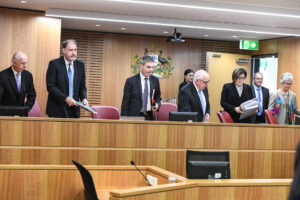The latest figures from the Fair Work Commission suggest no sign of a wages-prices spiral
The average annual wage growth in enterprise agreements not only remains well below inflation, it shows little sigh of increasing.
The Fair Work Commission’s latest report of enterprise bargaining agreements lodged in the past fortnight shows a solid average annual wage increase of 3.4%.
That good news however is tempered by the preceding fortnight’s very poor average wage growth of just 2.2%. Because each fortnight can see very large variations of wage rises given the different industries, locations and numbers of employees that can be covered by an agreement, it is better to look at the weighted average of agreements. Here the news is less impressive. Since July, the average annual wage rise of all agreements is just 2.8%.
The weighted average has fallen recently because of the large number of employees who were covered by agreements lodged in the fortnight to 4 November in the health and welfare services sector. Those agreements covered 55,224 employees – more than 30,000 more than were covered in all agreements lodged in the latest period – and delivered an average of just 2.1% wage growth.
The figures reinforce that wage growth continues to lag well below inflation, which is currently rising at 7.3%. It also highlights the absurdity of commentators and even the Reserve Bank who continue to warn of a wage-price spiral.
The FWC figures however once again do reveal the benefits of being in a union.
In the most recent period, union-lodged agreements had average annual wage growth of 4.0% compared to the 3.4% of non-union lodged agreements. Since July, the weighted average annual growth in union-lodged agreements is 3.8%, a full percentage point higher than the 2.8% of non-union lodged agreements.
Between the Lines Newsletter
The biggest stories and the best analysis from the team at the Australia Institute, delivered to your inbox every fortnight.
You might also like
The Wage Price Index shows pay packets are up. So why doesn’t it feel that way?
The latest figures from the Australian Bureau of Statistics show wages are growing at a reasonable rate, but a deeper look shows a big problem might be about to bite Australian workers.
If business groups had their way, workers on the minimum wage would now be $160 a week worse off
Had the Fair Work Commission taken the advice of business groups, Australia lowest paid would now earn $160 less a week.
The continuing irrelevance of minimum wages to future inflation
Minimum and award wages should grow by 5 to 9 per cent this year



